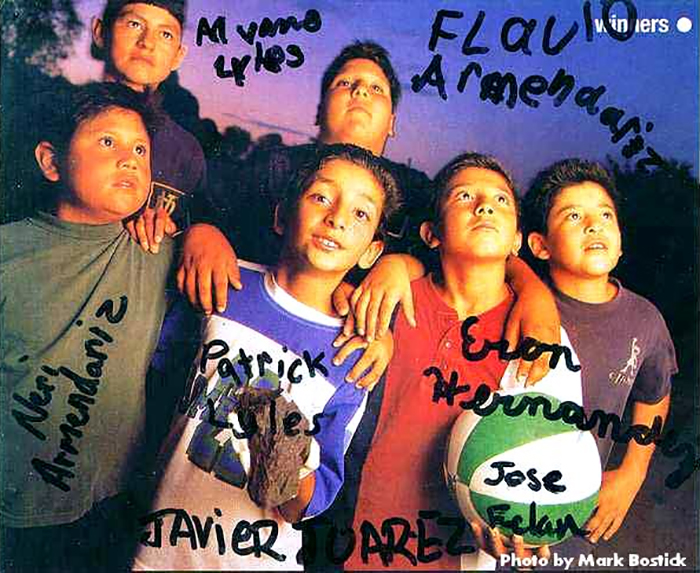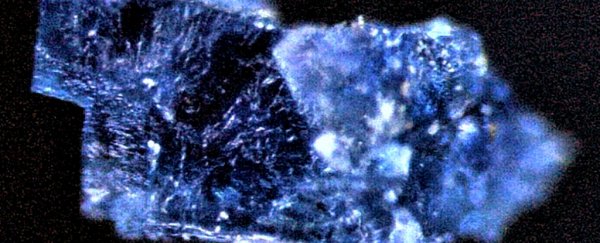Back in 1998, two meteorites with a fascinating mix of chemicals crashed down to Earth.
Based on a new analysis, scientists have shown they contain all the ingredients needed to spark life wherever they land, and may have travelled from an ancient ocean world.
In a scene straight out of a Steven Spielberg movie, one of the meteorites interrupted a kids' game of basketball in Texas, while the other landed near Morocco. Now we know more about what makes them so special.
Both these space rocks contain liquid water and the organic compounds that life needs to flourish, making them the first meteorites to be found with these two types of ingredients together.
They could potentially have contributed to life on any planet they landed on, according to scientists.
 One of the meteorites was found by these kids in Texas. (Mark Bostick)
One of the meteorites was found by these kids in Texas. (Mark Bostick)
"This is really the first time we have found abundant organic matter also associated with liquid water that is really crucial to the origin of life and the origin of complex organic compounds in space," says the lead researcher, Queenie Chan from The Open University in the UK.
"We're looking at the organic ingredients that can lead to the origin of life."
Those organic ingredients include the amino acids required for proteins to form, as well as carbon, oxygen, and nitrogen.
The scientists used X-rays from the Advanced Light Source (ALS) facility at the Lawrence Berkeley National Laboratory in California to identify the compounds and uncover this combination of life-giving ingredients.
The crystal fragments analysed were just a fraction of the width of a human hair, monitored in a dust-controlled room.
And while it doesn't prove life exists outside Earth, it certainly raises the possibility. The team thinks these rocks might have come from an ocean world formed in the early Solar System, like the Ceres dwarf planet.
One possibility is that ice or water jets from volcanic activity on Ceres (similar to those on Enceladus) could have imbued these rocks with such a rich mix of compounds.
More organic matter could have been added through a collision with another object like the Hebe asteroid, the researchers say, as these rocks flew through space.
What the scientists found in the meteorites' tiny blue and purple salt crystals also suggests they came from a similar source, and their asteroid parents may have shared some matter in the distant past.
The microscopic traces of water found in the fragments could date all the way back to the birth of our Solar System, 4.5 billion years ago, the team says.
"It's like a fly in amber," says one of the team, David Kilcoyne from the Berkeley Lab.
What makes the findings so exciting is how useful they can be to future research.
They hint at elements for life having existed way back in history, they can teach us more about how colliding objects in space share organic matter, and they're evidence of how the seeds of life on one planet can find their way to another.
With more crystals on the meteorites yet to be analysed, these rocks could throw up even more surprises in the future. In the meantime, they offer experts a fascinating glimpse into the past.
"Everything leads to the conclusion that the origin of life is really possible elsewhere," says Chan.
The research has been published in Science Advances.
